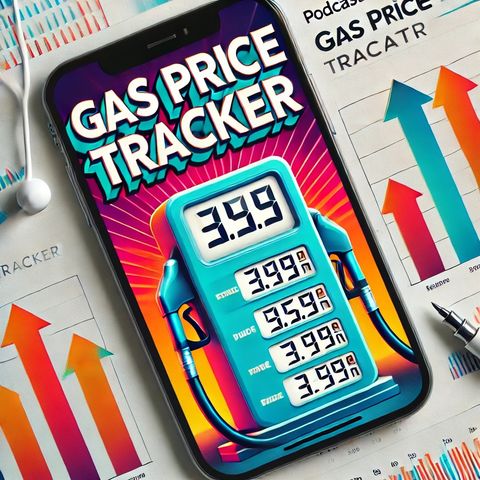Gas Prices in the US Fluctuate Due to Global Oil Markets, Domestic Production, and Local Factors

Scarica e ascolta ovunque
Scarica i tuoi episodi preferiti e goditi l'ascolto, ovunque tu sia! Iscriviti o accedi ora per ascoltare offline.
Gas Prices in the US Fluctuate Due to Global Oil Markets, Domestic Production, and Local Factors
Questa è una trascrizione generata automaticamente. Si prega di notare che non è garantita la completa accuratezza.
Descrizione
Gas prices in the United States have always been a topic of considerable interest and concern for many individuals. As of today, November 3, 2024, listeners might notice that gas...
mostra di piùListeners should understand that the price of oil in the global market is a primary determinant of gas prices domestically. As of now, international markets are experiencing some volatility due to geopolitical tensions in major oil-producing regions, supply chain disruptions, and varying levels of production by key players in the oil industry, such as OPEC+ countries. Such dynamics have led to periods of both decreases and increases in crude oil prices, subsequently affecting gasoline costs at the pump.
Domestically, the United States has engaged in efforts to stabilize the oil supply. Policies promoting energy independence have been pivotal, including the increased production of shale oil. Advances in technology and infrastructure have facilitated this, although environmental concerns often present challenges and lead to regulatory scrutiny which could affect production levels and, ultimately, pricing.
Seasonal factors also play a crucial role in gas prices. Typically, demand tends to increase during the summer months due to higher travel rates, often resulting in higher prices. Conversely, as the year progresses into late autumn and winter, demand decreases, often leading to a slight dip in prices. However, unforeseen weather events such as hurricanes can disrupt refinery operations, particularly along the Gulf Coast, introducing additional price volatility.
State-specific factors such as taxes significantly impact the price that listeners pay at the pump. For instance, states like California typically have higher gas prices due to stringent environmental regulations and higher state taxes. In contrast, states like Texas might enjoy lower prices due to their proximity to refineries and lower state taxes.
Economic conditions also contribute to the dynamics of prices. Inflation and the strength of the dollar can influence the purchasing power of consumers and the costs of distribution and sales within the country. The broader economic environment, including employment rates and consumer confidence, affects overall demand for gasoline.
On a local level, competition between gas stations plays a role in pricing. Stations in close proximity often compete aggressively, leading to variances in pricing even within the same town or city. Brand reputation, fuel quality, and additional services offered by stations can also influence consumers' decisions and perceptions of prices.
Looking ahead, the push towards renewable energy and electric vehicles continues to gain momentum as part of broader environmental initiatives. This shift poses long-term implications for the demand for gasoline, potentially influencing future pricing strategies and market share for traditional oil companies.
Listeners may find it beneficial to utilize mobile apps and websites that track gas prices in their area to find the most affordable options. Moreover, having an awareness of global and domestic events, as well as economic policies, can provide greater context for understanding the ongoing fluctuations they experience at the gas pump on any given day.
Informazioni
| Autore | QP-5 |
| Organizzazione | William Corbin |
| Sito | - |
| Tag |
Copyright 2024 - Spreaker Inc. an iHeartMedia Company
